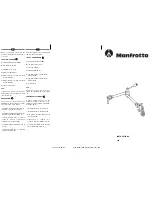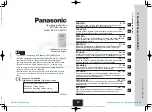
Unit Description
5-4
The ETV controls the flow of refrigerant returning to the compressor. Therefore, it operates as both a compressor throttling valve
and a modulation valve. During the Full Cool mode, the unit controller sends an electrical signal to adjust the ETV to maximise
system cooling capacity. During the Modulation Cool mode, the unit controller sends a signal to close the ETV a precise amount.
This throttles the suction gas returning to the compressor and reduces the system cooling capacity to match the load requirements.
The ETV system provides advanced control of the refrigeration system by:
• Suction pressure control algorithm allows the refrigeration system to fully utilize the engine horsepower available under
varying operating conditions.
• Discharge pressure control algorithm protects against high discharge pressures and engine overload in high ambients.
• Engine coolant temperature algorithm protects against unit shutdown and possible engine damage from high engine operating
temperatures.
• Modulation and hot gas bypass system control of the cooling capacity for precise control of the compartment temperature.
NOTE: Modulation is only available for SLX spectrum ETV, SLXe Spectrum, and SLXi Spectrum when using Host only
(Zone 2 and zone 3 switched off) If using single zone control - modulation function is deactivated.
Data Logging Option (µP-IV, µP-V, µP-VI, SR-2 and SR-3 Controllers)
µP-VI controllers are available with an optional data logging system. SR-2 and SR-3 controllers have them as standard. The data
logging system records operating events, alarm codes and compartment temperatures. This trip data can be retrieved (but not
erased) from the controller memory using an IBM compatible laptop or desktop microcomputer and Thermo King Wintrac or
Service Tool software. Detailed graph or table trip reports can then be created and printed.
Sleep Mode Option (Option on µP-IV and µP-V Controllers, Standard on µP-VI, SR-2 and
SR-3 Controllers)
µP-IV or µP-V controllers are available with an optional Sleep mode feature. The features includes a 3-position Unit On/Off/
Sleep switch. When the switch is in the Sleep position, the controller display shows “SLEEP MODE” and the CYCLE-SENTRY
operates as required to keep the engine warm and maintain the battery charge level.
Sleep mode is a standard feature on µP-VI, SR-2 and SR-3 Controllers and can be accessed directly using the MODE key on the
controller. The 3-position Unit On/Off/Sleep switch is optional, but is not necessary.
WARNING: With the On/Off/Sleep switch in the SLEEP position, the unit may start at any time without prior warning.
NOTE: Sleep mode operation does NOT maintain temperature inside the trailer.
Tracking Option (µP-IV, µP-V, µP-V, SR-2 and SR-3 Controllers)
µP-IV, µP-V, µP-VI, SR-2 and SR-3 controllers are available with an optional TracKing system interface. The controller
transmits recorded trip data through a data cable to a Tracking satellite communication system located in the tractor. The satellite
communication system then transmits the trip data to a central location for processing. The TracKing system can be configured
to transmit data at preset intervals, to transmit data on demand, or to transmit data backwards from the TracKing interface to the
controller.
SLXi has Thermo King TracKing as standard
CYCLE-SENTRY (Start/Stop) Control Option
TG-VI control systems are available with an optional CYCLE-SENTRY Start/Stop fuel saving system. µP-IV, µP-V, µP-VI,
SR-2 and SR-3 control systems include CYCLE-SENTRY as standard.
The CYCLE-SENTRY system automatically starts the unit on controller demand and shuts down the unit when all demands are
satisfied. The CYCLE-SENTRY system maintains the compartment temperature; engine block temperature; and battery charge
level (TG-VI, µP-IV, µP-V, µP-VI and SR-2, SR-3 controllers ONLY).
Summary of Contents for SLXi Spectrum
Page 17: ...Safety Precautions 2 5 Warning Decals...
Page 18: ...Safety Precautions 2 6 Warning Decals Information Decals...
Page 74: ...Unit Description 5 30...
Page 128: ...Controller Operation 7 28...
Page 156: ...Electrical Maintenance 8 28...
Page 234: ...Refrigeration Maintenance 10 22...
Page 309: ...13 Mechanical Diagnosis TK 482 TK 486 and TK 486V Engines 13 2...
Page 316: ...Mechanical Diagnosis 13 8...
Page 322: ...Refrigeration System Diagnosis 14 6...
Page 332: ...Single Temperature Refrigeration System Diagrams 15 10...
Page 339: ...Multi Temperature Refrigeration System Diagrams 16 7...
Page 340: ...Multi Temperature Refrigeration System Diagrams 16 8...
















































